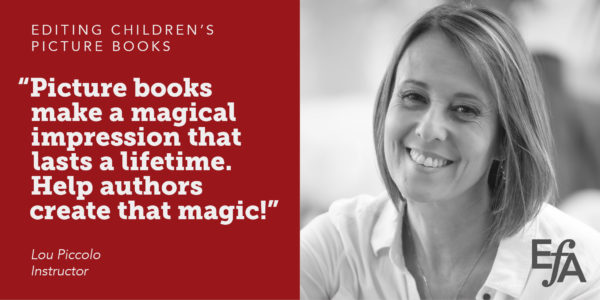Description

Our online courses are conducted through the LAMP Consortium on Sakai, a learning management system (LMS). You never need to be at your computer at any specific hour. More information about how these asynchronous classes are conducted is available here.
Picture books are a child’s first impression of reading, but they are essentially books for an audience who cannot read. This is why picture book manuscripts have “rules” to follow for them to be engaging to both the children who listen to them and the adults who read them out loud. Editing picture books requires specialized knowledge and techniques specific to this type of fiction. If you’d like to begin editing children’s picture books, this course is a comprehensive guide ensuring you can help your client to produce a properly structured manuscript with a forward-moving plot, essential obstacles and memorable characters.
At the end of this class, students will be able to: identify the characteristics of a picture book, understand how these characteristics work together, identify and analyse problems in a manuscript and do a developmental and line edit of a picture book manuscript with reference to the specific “rules” of picture books.
Week 1: What is a picture book?
- The format
- How words and illustrations work together
- Words and rhythms of a picture book
Week 2: Developmental editing
- Plot
- Motivation
- Conflict
- Characters
- Setting
Week 3: Storytelling techniques and line editing
- Vocabulary
- Point of view
- Dialogue
- Tone
- Showing and telling
Week 4: Trouble-shooting and putting it all together
- Revising plot line, pace and visual elements
- Layout and page turns
- A word about rhythm and rhyme
Lou Piccolo is a freelance developmental editor of fiction and creative non-fiction. She also writes graded readers for Burlington Books in Spain and is the editor for Go English Kids magazine in Lyon, France.


